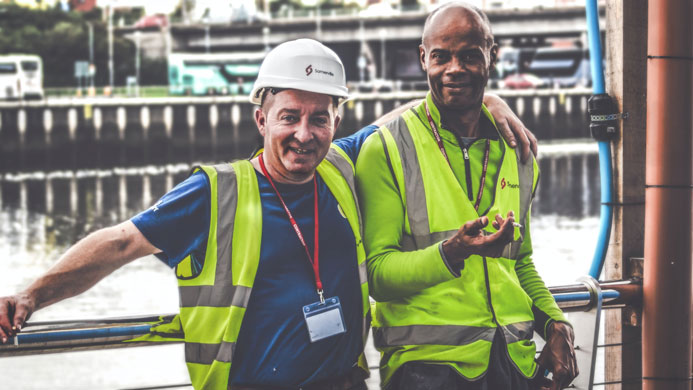Consular processing is the procedure through which individuals apply for an immigrant or non-immigrant visa at a U.S. consulate or embassy outside the United States. This pathway allows foreign nationals to obtain a visa, which is required for entry into the country, and eventually, adjust their status to permanent residents if they are eligible. This comprehensive guide will walk you through the steps involved in consular processing, key requirements, and tips to ensure a successful visa application experience.
Step 1: Determine Your Visa Category and Eligibility
Before initiating the consular processing, you must first determine the appropriate visa category for your specific circumstances. Visas are divided into two main categories: immigrant and non-immigrant. Immigrant visas are for those who plan to live permanently in the United States, while non-immigrant visas are for temporary stays, such as tourism, business, study, or temporary work.
To determine your eligibility for a specific visa category, you must meet certain criteria, such as having a qualifying family relationship with a U.S. citizen or lawful permanent resident, a valid job offer from a U.S. employer, or acceptance into an accredited educational institution.
Step 2: File the Appropriate Petition
Once you have determined your visa category and confirmed your eligibility, the next step is to file the appropriate petition with U.S. Citizenship and Immigration Services (USCIS) or, in some cases, directly with the U.S. consulate or embassy.
For family-based immigrant visas, your U.S. citizen or lawful permanent resident relative will need to file Form I-130 (Petition for Alien Relative) on your behalf. For employment-based immigrant visas, your U.S. employer will file Form I-140 (Immigrant Petition for Alien Worker). For certain non-immigrant visas, such as the K-1 fiancé(e) visa or the U visa for crime victims, specific forms must be submitted, like the I-129F or I-918, respectively.
Step 3: The National Visa Center’s Role
After USCIS approves your petition, it will forward the approved petition to the National Visa Center (NVC), which plays a crucial role in consular processing. The NVC is responsible for collecting visa application fees, supporting documents, and ensuring that your case is complete before scheduling an appointment at the U.S. consulate or embassy in your home country.
Once the NVC receives your approved petition, they will assign you a case number and send you further instructions on how to proceed with your visa application. You will be required to submit various documents, such as your civil documents, police clearance certificates, and financial support evidence.
Step 4: Complete the Visa Application Form
At this stage, you must complete the appropriate visa application form, which varies depending on your visa category. For immigrant visas, you need to submit Form DS-260 (Immigrant Visa and Alien Registration Application) online. Non-immigrant visa applicants must complete Form DS-160 (Non-immigrant Visa Application). Ensure that you answer all questions accurately and completely to avoid potential delays or complications in the process.
Step 5: Schedule and Attend Your Medical Examination
Before your visa interview, you must undergo a medical examination by a physician approved by the U.S. consulate or embassy. The examination typically includes a physical examination, vaccinations, and screening for certain medical conditions. Make sure you bring your passport, visa interview appointment letter, and medical examination fees to the appointment. The physician will provide you with a sealed envelope containing your medical examination results, which you must not open. Instead, submit the envelope to the consular officer during your visa interview.
Step 6: Attend Your Visa Interview
The final step in
the consular processing journey is attending your visa interview at the U.S. consulate or embassy. The NVC will schedule your interview appointment and send you a confirmation letter with the date, time, and location of the interview.
Prepare for your interview by gathering all required documents, such as your passport, appointment letter, medical examination envelope, and any additional supporting evidence requested by the consulate. Arrive early for your appointment, as you will need to go through security checks before entering the building.
During the interview, the consular officer will review your application and documents, verify your eligibility for the visa category, and ask questions to assess your credibility and intentions. Answer all questions honestly and provide clear and concise responses. The consular officer will make a decision on your visa application based on the information and documents provided during the interview.
Step 7: Visa Approval and Entry into the United States
If your visa is approved, the consular officer will place a visa sticker in your passport and provide you with a sealed envelope containing your approved petition and supporting documents. You must not open this envelope. Instead, present it to the U.S. Customs and Border Protection (CBP) officer at your port of entry when you arrive in the United States.
Upon arrival, the CBP officer will review your documents, ask questions about your purpose of travel, and make a final determination on your admissibility. If granted entry, you will be allowed to enter the United States and begin your authorized stay.
Conclusion
Consular processing is a crucial pathway for foreign nationals seeking to obtain a U.S. visa, whether for temporary or permanent purposes. By understanding the steps involved and following the guidance provided in this guide, you can navigate the consular processing journey more confidently and increase your chances of a successful visa application.
As each individual’s situation is unique, it is always recommended to consult with an experienced immigration attorney to ensure that your specific needs and concerns are addressed throughout the consular processing journey. They can provide invaluable assistance in navigating complex immigration rules, preparing the necessary documentation, and representing your interests during the visa interview process.

